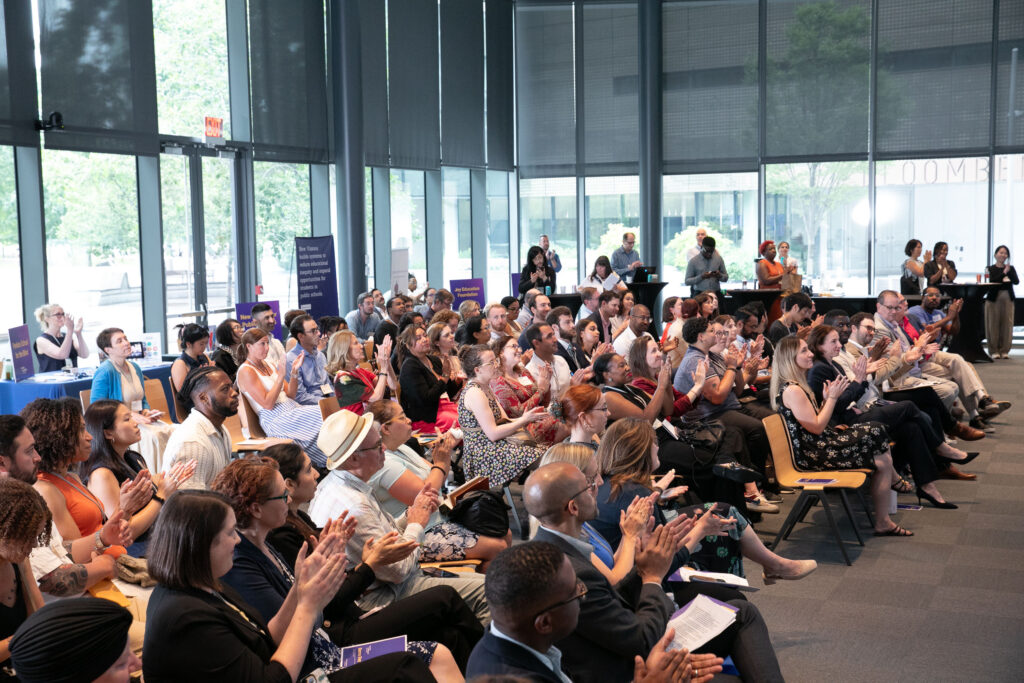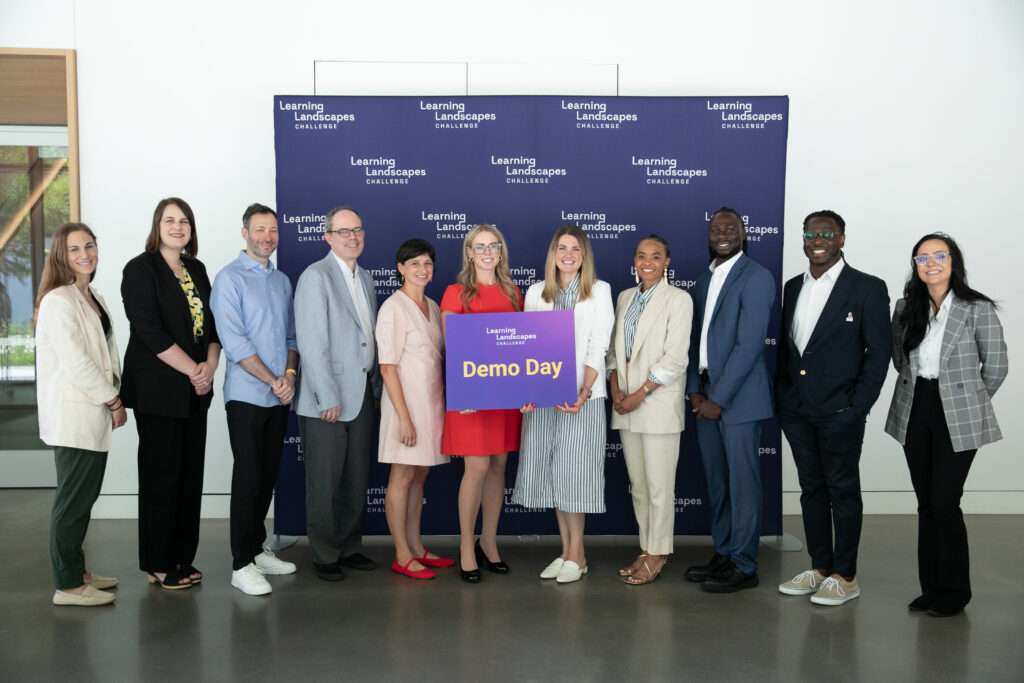
This July, more than 100 education leaders, funders, and innovators gathered to watch the five Phase 3 teams present their visions for the future of education infrastructure. The event culminated with the announcement of two grand-prize winners, but all five teams did an incredible job demonstrating how infrastructure can be the connective tissue between learning experiences, driving equity and opportunity. Since Demo Day, the challenge team has reflected on an extraordinary 18-month journey driven by a question: How might we integrate physical, digital, and social infrastructure to transform learning for all students? As we bring the challenge to a close, we celebrate and reflect on what it accomplished and its vision for the future.
What we accomplished
Learning from innovators
By casting an intentionally wide net, the Learning Landscapes Challenge was designed to be more than a competition. It was also a discovery process. As teams across the country submitted 270 Phase 1 solutions, we learned how innovators are approaching infrastructure to help connect learning across in-school, community, and digital contexts. The challenge received solutions from 44 states, Washington, D.C., Puerto Rico, and the U.S. Virgin Islands, highlighting how infrastructure can serve as a catalyst for change rather than a constraint.
Bridging the implementation gap
Creating safe spaces for innovators to experiment, learn, and iterate proved essential to bridging the implementation gap. Through multiple phases — from 270 Phase 1 submissions to 40 Phase 2 accelerator teams to five Phase 3 incubator teams — participants received increasingly intensive support. Supported by 25 esteemed challenge mentors, the 14-week accelerator and six-month incubator helped teams validate assumptions, build partnerships, and develop clear implementation roadmaps. After 18 months, the Phase 3 teams have advanced their solutions, de-risking their implementation plans and positioning themselves for broader investment.
Elevating the field
Most of all, this challenge has elevated and built a community around an emerging field. When teams entered, not one would have used the term “multidimensional infrastructure” to describe its work. Through the challenge, teams, judges, mentors, and champions have come to see themselves as part of something bigger: a movement to reimagine how infrastructure can serve as the foundation for equitable learning. The multidimensional infrastructure framework helped teams articulate how their work fits within the broader education landscape — particularly in that crucial space between classroom interventions and systems-level change. This movement will outlast the challenge, driving continued partnership and innovation.

A vision for the future
The Phase 3 teams exemplify three key insights that emerged from the challenge — insights that point toward that future.
Integration over replacement
Teams that advanced in the challenge demonstrated approaches beyond singular AI or ed-tech products, showing that technology is most powerful when it enhances — not replaces — human connection. Joy Education’s mobile reading lab uses AI to match students with tutors, but the magic happens in the relationships built between caring adults and young learners. New Visions for Public Schools exemplifies this approach, using cutting-edge technology to combat chronic absenteeism while recognizing that relationships create the real magic. Similar to Joy Education, it’s caring adults who ensure that students don’t fall through the cracks.
Redefining success
Throughout Phase 2 and Phase 3, teams also presented an expanded view of what drives academic and career success. A student experiencing homelessness needs stable relationships and their basic needs met in order to learn in school. Rural students need to see healthcare careers as accessible and achievable within their own communities. Students with disabilities require not just accommodations but comprehensive support systems that prepare them for independence. By addressing these fundamental needs, thoughtful infrastructure shapes how well students can achieve their goals within and beyond school. When we expand our success metrics to include stable housing, career visibility, and independence alongside test scores, we drive toward a more equitable education system.
Celebrating student-centered approaches
The Learning Landscapes Challenge was based on a simple but crucial premise: No matter where students live or the circumstances into which they’re born, they deserve access to learning experiences that meet them where they are and prepare them for where they’re going. These winning solutions show us how to deliver on that promise — not through one-size-fits-all programs, but through flexible infrastructure that adapts to community needs while maintaining high standards and ambitious outcomes.
As we celebrate the grand-prize winners and look toward the broader impact this challenge will catalyze, we’re grateful to every educator, student, and community member who believes in transformation. The challenge may be ending, but the solutions it supported and the networks it built will endure, driving innovation at the intersection of infrastructure and education. Thank you for being a part of this movement. The work — and the community — continues.
